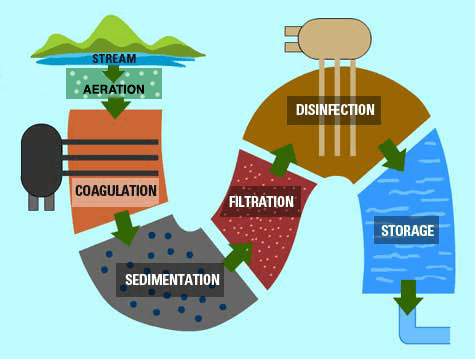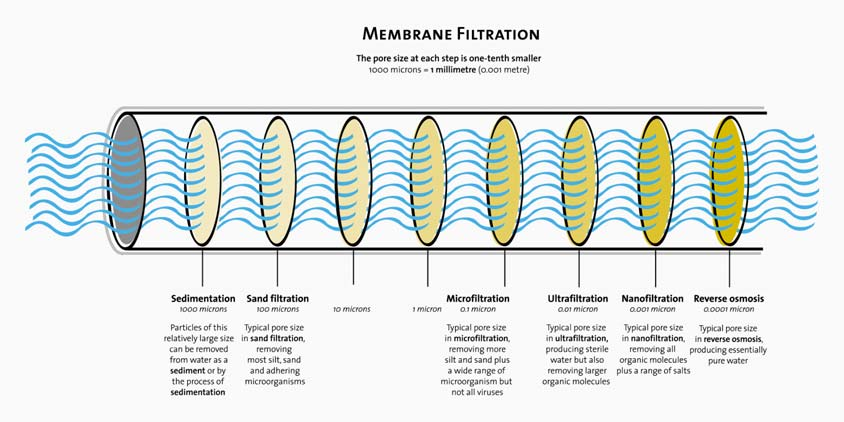Fascination About Water Softener Filtration System
Table of ContentsHow Water Softener Filtration System can Save You Time, Stress, and Money.6 Simple Techniques For Water Softener Filtration SystemThe 4-Minute Rule for Water Softener Filtration System6 Easy Facts About Water Softener Filtration System ExplainedNot known Details About Water Softener Filtration System
7), with a flow rate of 48 cubic metres per square metre of filter surface per hour (this is written as 48 m3 m2 h1) are typically used. When the filters are complete of entraped solids, they are backwashed. In this procedure, tidy water as well as air are pumped in reverse up the filter to remove the caught contaminations, and the water bring the dirt (described as backwash) is pumped into the sewage system, if there is one.6 Chlorination, After sedimentation, the water is disinfected to remove any type of staying pathogenic micro-organisms - water softener filtration system. The most typically used anti-bacterial (the chemical made use of for sanitation) is chlorine, in the form of a fluid (such as salt hypochlorite, Na, OCl) or a gas.
The amount of chlorine left hereafter is called recurring chlorine. This remains in the water right with the distribution system, securing it from any type of micro-organisms that may enter it, until the water gets to the customers. Globe Wellness Organization Guidelines (THAT, 2003) recommend an optimum recurring chlorine of 5 mg l1 of water.
5 mg l1 of water after 30 minutes' contact time (THAT, n. d.). There are various other ways of disinfecting water (e. g. by using the gas ozone, or ultraviolet radiation) however these do not safeguard it from microbial contamination after it has actually left the water treatment plant. Following sanitation the treated water is pumped into the circulation system.
Water Softener Filtration System Fundamentals Explained

On the other hand, as you discovered in Study Session 2, in the Rift Valley of Ethiopia, the water sources consist of a higher focus of fluoride than is desirable. Tekle-Haimanot et al. (1995) located that the level of fluoride in drinking water from deep wells there varied from 1. water softener filtration system. 5 to 36 mg l1.
The 2 chemicals are added to and quickly mixed with the fluoride-contaminated water and after that the water is stirred delicately. 5.3 Administration of wastes from water therapy plants, From the water therapy procedure that you have actually simply examined, make a listing of the various wastes that emerge.
In the latter it is included in the inbound sewer, where it can help settlement of solids. The backwash from the sand filter is released right into the sewer or returned to the river after settlement of solids. Packaging waste such as chemical drums can be returned to the vendor for reuse.
What Does Water Softener Filtration System Do?
5.4 Sustainability as well as durability in water treatment, In Research study Session 4 you review regarding some variables that can influence the sustainability of a water resource. Reducing dirt erosion by growing trees and also maintaining plant life click here for more info can minimize the quantity of silt that gathers in a storage tank and extend its life.
Facility systems ought to be stayed clear of and also any place feasible locally available products must be made use of. If a coagulant is required, the one that can be bought in-country will certainly be more suitable to one that has to be imported. Water treatment plants eat energy, as well as if this energy can be supplied with renewable sources (such as solar or wind) it will keep operating costs down and also boost sustainability.
It can be challenging to get extra components, so there should be strategies in position for purchase of replacements. (These and various other management problems are the topic of the next research study session.) Another essential variable in sustainability is an effective upkeep system, which needs preparation and, significantly, calls for trained and also motivated personnel.

The 5-Second Trick For Water Softener Filtration System
The guidelines for the water system need of various classifications of communities, received Table 5. 1, may be utilized to estimate the minimum quantity of water that should be provided for an offered populace. Take into consideration a town with a populace of 60,000. What would certainly be the minimum quantity of water needed? From Table 5.
This allowance could, for instance, be 15%. The water will need to be saved in service storage tanks. As you found out in Research study Session 1, service reservoirs have to hold a minimum of 36 hours' or 1. 5 days' supply of water. Box 5. 1 reveals a computation of water company website demand as well as solution tank size for a hypothetical community.
The total water need each day would be 200 + 13. Permitting for 15% leakage and water use by the water energy, each day the needed quantity of treated water provided would be: 213. 5 m3 x 1.
5 days). 5 = 369 m3. The water requirement would therefore be 246 m3 per day, and also the minimum solution reservoir ability needed would certainly be 370 m3.
Water Softener Filtration System - Truths
Aluminium sulphate as well as ferric chloride are 2 coagulants frequently made use of in water treatment. The following process is flocculation, where the water is stirred delicately to enable large flocs to form.
After filtering the water is sanitized by chlorine. The wastes from a water treatment plant include testings, sludge, backwash waters as well as packaging from the supply of chemicals and tools.
Resilience of water treatment plant can be aided by taking protective steps versus all-natural dangers as well as guaranteeing that all equipment and also building is of a high requirement. Fundamental calculations for water can be performed if the size of the populace to be served as well as various other water needs are known.